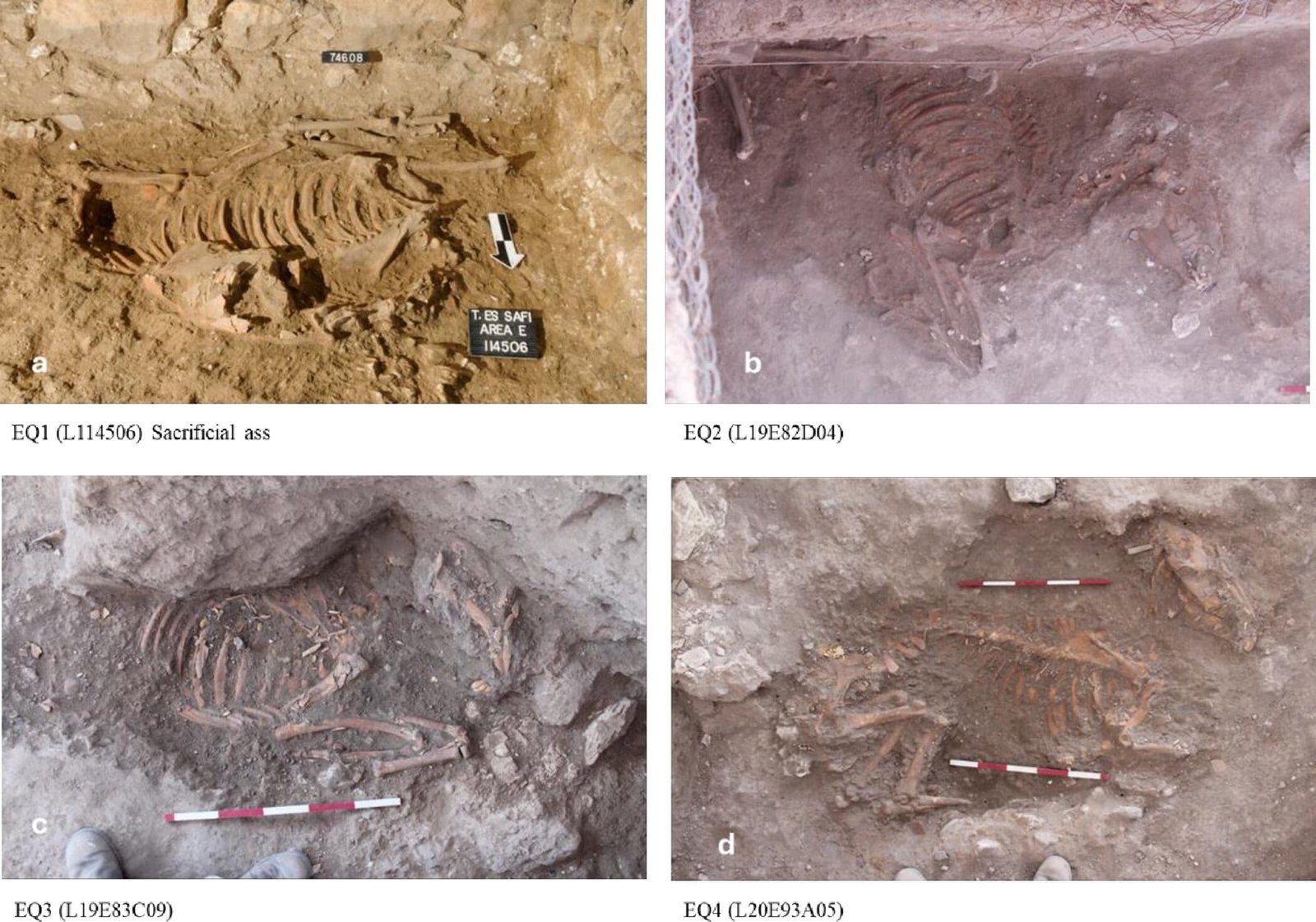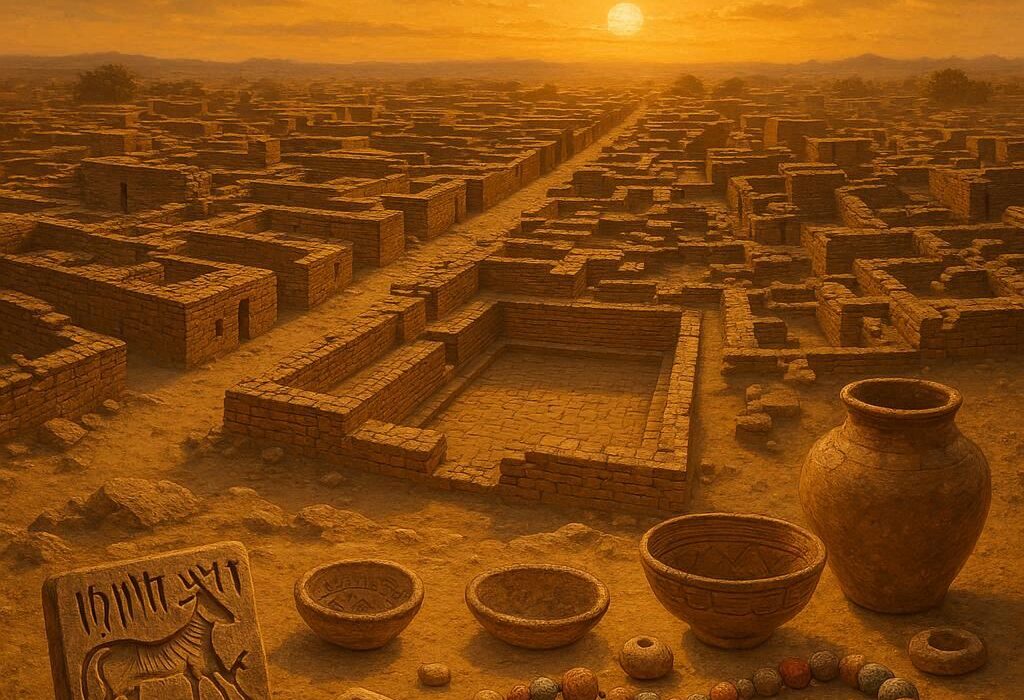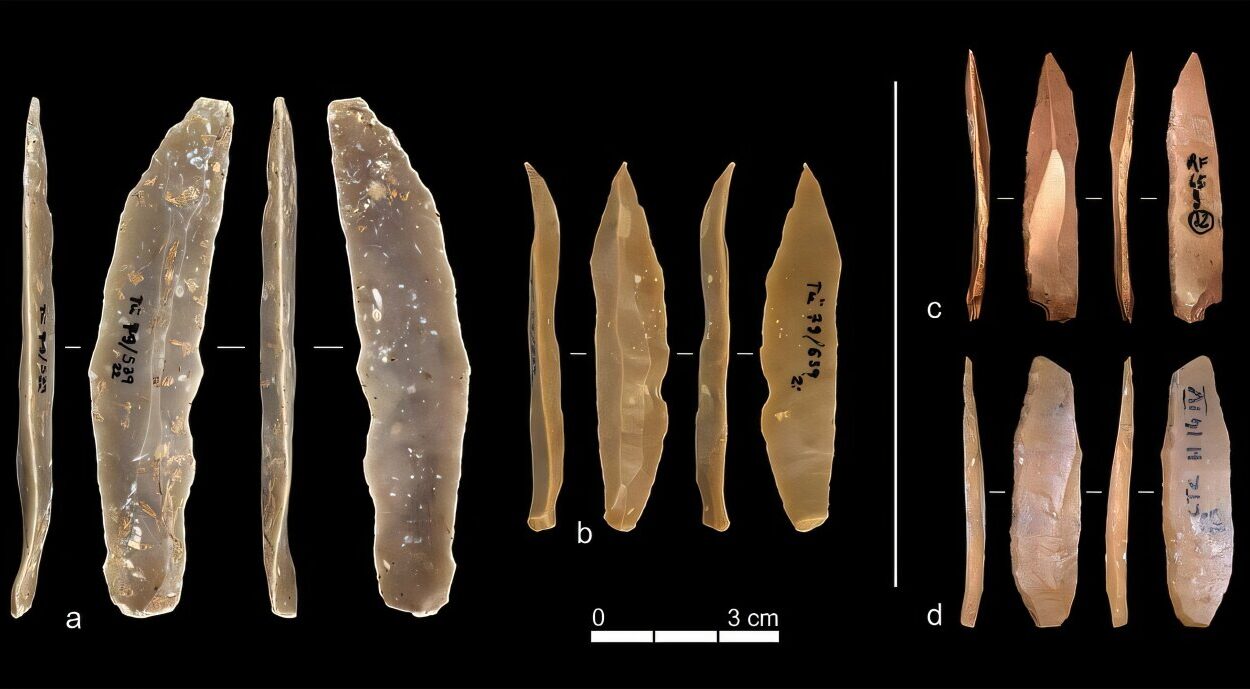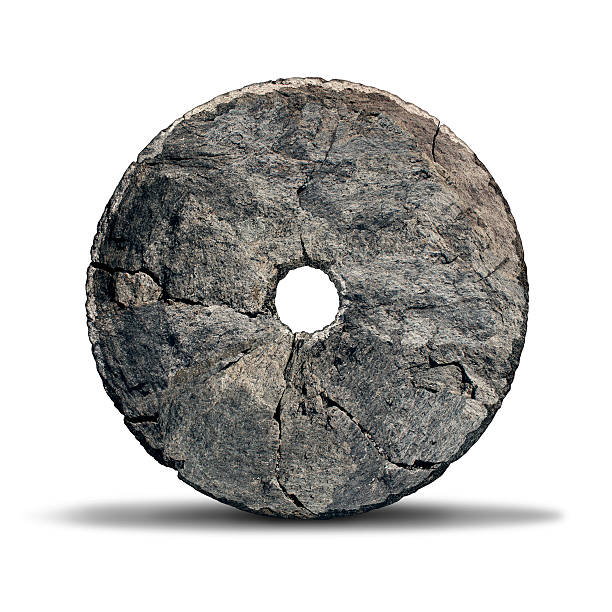Beneath the dust and sun-baked stones of southern Israel, archaeologists have uncovered a secret older than the pyramids—a story of donkeys, sacrifice, and the deep ties that bound the ancient Mediterranean world.
At the early Bronze Age city of Tell eṣ-Ṣâfi/Gath, once a bustling urban hub some 4,500 years ago, four young donkeys lay buried beneath the floor of a house. Their legs were bound. Their heads faced east, as if staring into the dawn. One animal’s skull had been severed and carefully placed upon its own body, a haunting arrangement that whispers of ritual and belief.
Now, in a study published in PLOS One, scientists have revealed that these were no ordinary beasts of burden. The donkeys were imports from Egypt—animals of such value and prestige that they were chosen for sacrifice, their bodies hidden beneath the homes of everyday people in a neighborhood that was anything but royal.
More Than Beasts of Burden
To most of us, donkeys might seem humble creatures, associated more with stubborn braying than sacred ceremonies. Yet in the Bronze Age Mediterranean, they were lifelines. They carried loads across deserts, transported food, water, and precious metals. And, in some cases, they ended up on the dinner table.
“Donkeys played a vital role in the lives of ancient Mediterranean people,” explains Dr. Haskel Greenfield, one of the study’s authors. “They were economic engines, used for transport, trade, and sometimes as food. But what’s fascinating here is how certain donkeys were elevated beyond the ordinary.”
At Tell eṣ-Ṣâfi/Gath, evidence shows that donkeys weren’t all treated the same. Some were food. Others were sacred. The difference lay partly in where they came from—and what they symbolized.
A Secret Beneath the House Floor
The story of these animals comes from the city’s ruins, where archaeologists unearthed the remains of four donkeys beneath a single home. These were young females, in the prime of their lives—an odd age to slaughter useful animals.
Their burial was no accident. Their bodies were deliberately arranged. Heads faced east, a direction often imbued with spiritual significance in ancient cultures. The severed head of one donkey, carefully placed atop its abdomen but still oriented toward the rising sun, suggests a ritual act performed with precision and intention.
Nearby, archaeologists found other animal remains scattered in refuse deposits: sheep, goats, and the jaw of a fifth donkey. Unlike the four carefully interred animals, these were clearly butchered for meat, then discarded without ceremony.
So why the distinction?
The Egyptian Connection
The key to solving the mystery lay inside the donkeys’ teeth.
Dr. Greenfield and his colleagues performed multi-isotope analyses, examining levels of carbon, oxygen, and strontium in the animals’ tooth enamel. These chemical signatures can act like GPS coordinates, revealing where an animal grew up.
The results were astonishing: the four sacrificial donkeys were born and raised along the Nile Valley in Egypt, hundreds of kilometers away from the rocky hills of Canaan. The fifth donkey, whose jaw lay among butchered bones, was of local origin.
“It is the Egyptian import status that is one of the key criteria for an animal to be selected for sacrifice,” the researchers write. “Being young and female are the other two variables. Thus, young female donkeys from Egypt are the ideal sacrificial animal at Tell eṣ-Ṣâfi/Gath.”
These animals weren’t simply pack animals—they were prestigious symbols, perhaps even diplomatic gifts or high-value trade commodities. Their sacrifice would have carried deep cultural and possibly spiritual meaning, highlighting how intertwined trade, religion, and social identity were in the ancient world.
Rituals Beyond the Elite
One of the most surprising discoveries wasn’t the sacrifice itself—but where it took place.
The house above the donkey burials stood in what archaeologists describe as a “non-elite” neighborhood. This wasn’t a royal palace or a temple complex. It was part of a neighborhood where average urban families lived.
This suggests that rituals involving valuable imported animals weren’t restricted to the wealthy or ruling class. Instead, even middle-class families may have participated in ceremonies involving offerings of significant economic and symbolic value.
“The idea that non-elites were performing sacrifices of valuable animals imported from Egypt really changes how we think about social and religious life in the Bronze Age,” says Dr. Greenfield. “It points to a broader distribution of ritual practices across different levels of society.”
A Window into an Ancient World
The findings open a rare window into everyday life in early Bronze Age Canaan. They hint at a society deeply connected through long-distance trade, where even a humble donkey could become an ambassador between civilizations.
They also remind us how much remains hidden beneath our feet—stories buried under house floors, waiting millennia to be told.
Despite some limitations, including small sample sizes and gaps in isotopic data from ancient Egypt, the study provides compelling evidence for how exotic animals held special status in ritual life. It shows that in the Bronze Age, as today, what you owned—and where it came from—could say much about who you were and what you believed.
So the next time you see a donkey, remember: once, in a city long reduced to dust, four noble creatures lay buried beneath the homes of ordinary people. They were symbols of wealth, bridges between nations, and sacred offerings to unseen gods. Their story is part of ours—a reminder that even the humblest of animals can leave echoes across the ages.
Reference: Elizabeth R. Arnold et al, An isotopic perspective on equid selection in cult at Tell eṣ-Ṣâfi/Gath, Israel, PLOS One (2025). DOI: 10.1371/journal.pone.0326421






